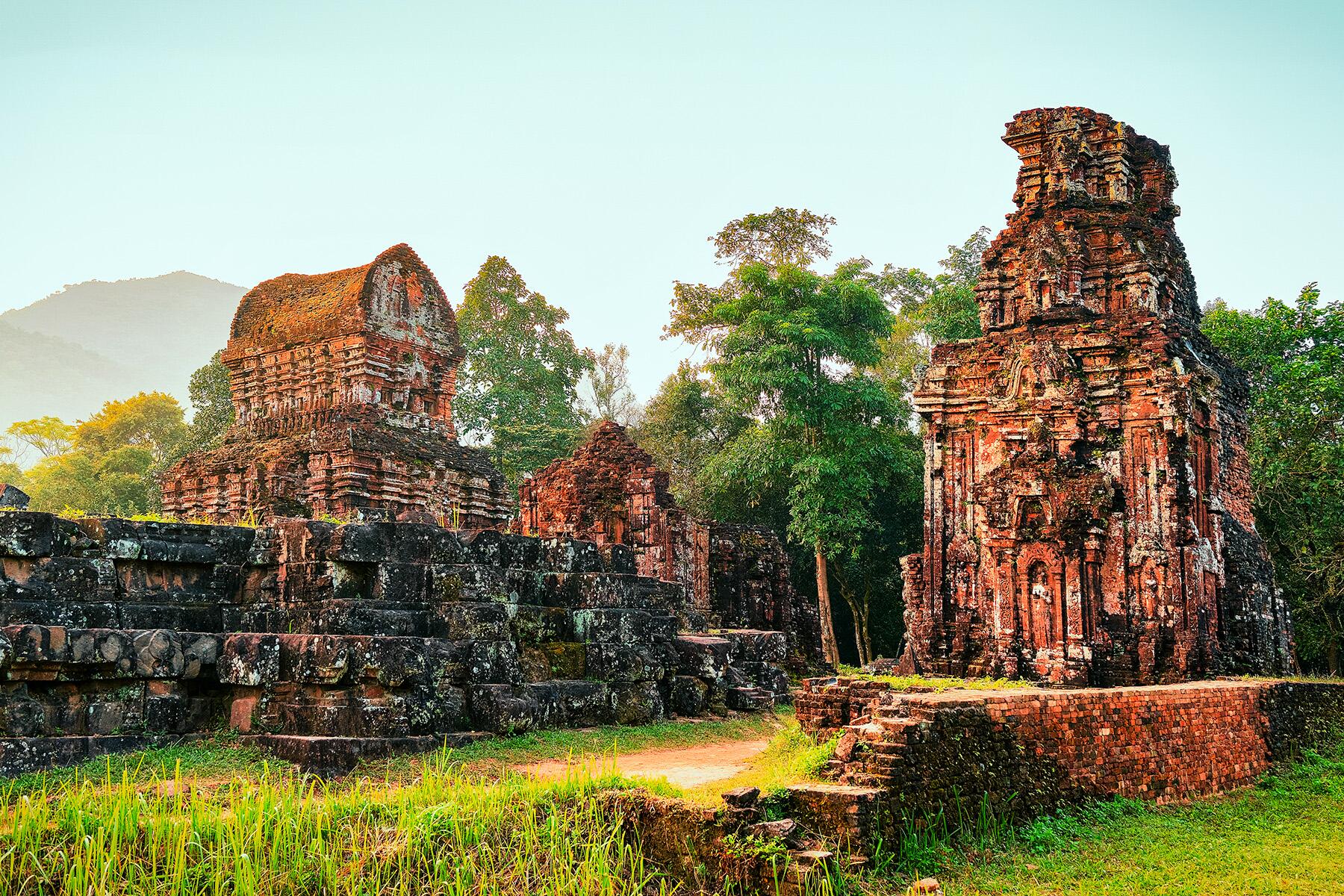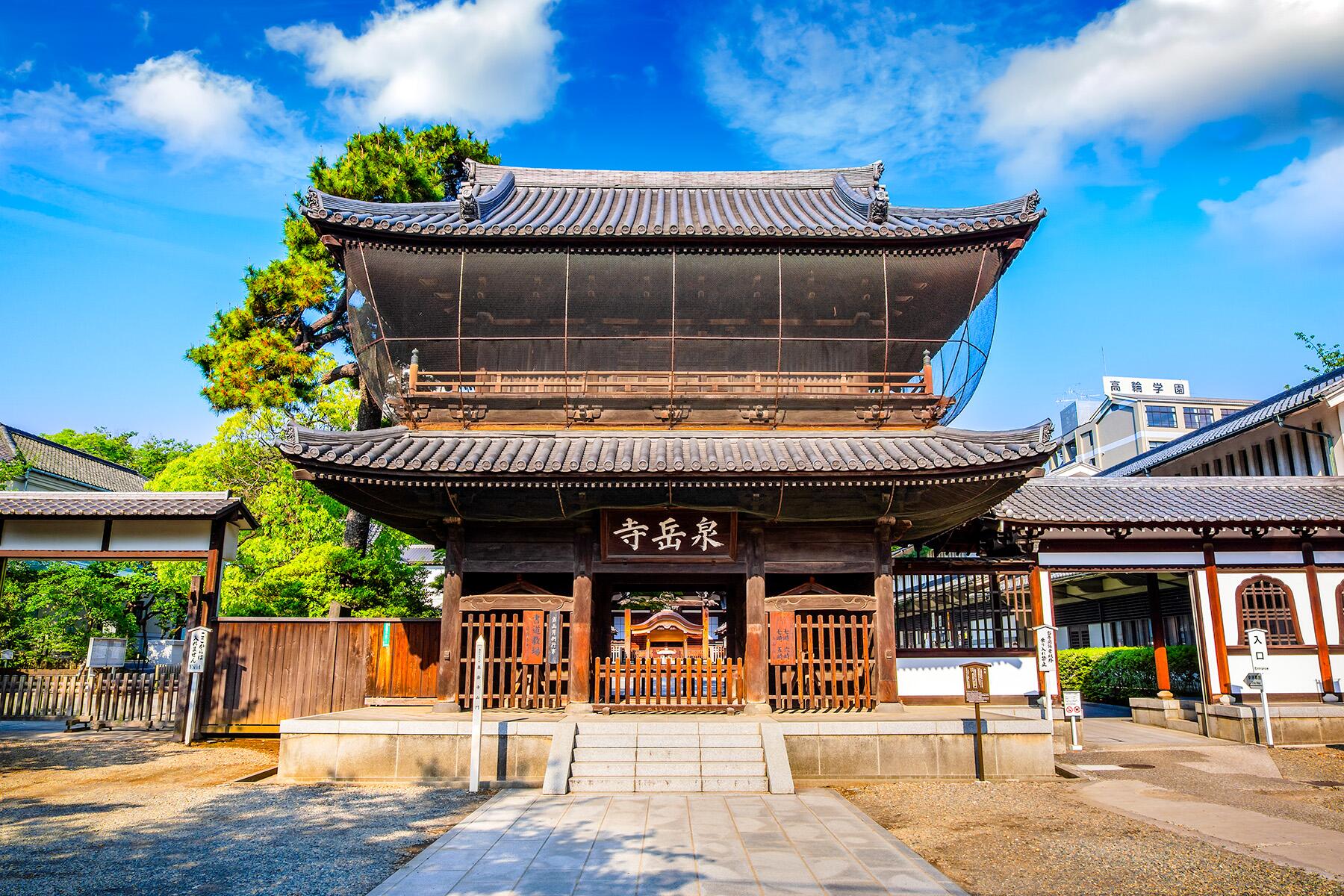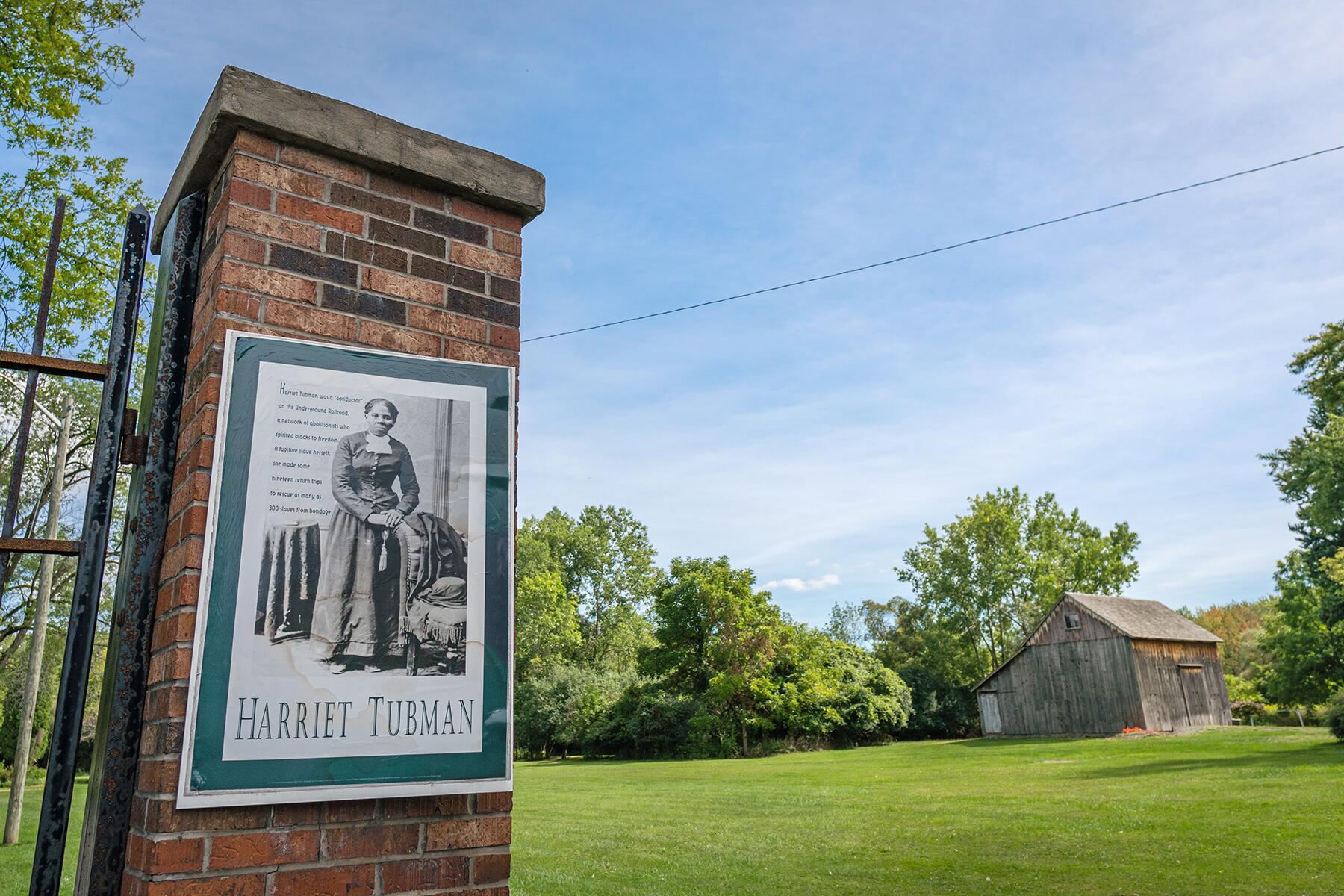- ⁄
- Travel News
- ⁄
- History
Discover the historic places that made up the Underground Railroad.
As Juneteenth celebrates the day in 1865 when news of Abraham Lincoln’s 1863 Emancipation Proclamation finally reached rural Texas more than two years after it was ordered, now’s a time to reflect and recall the heroic stories of people who risked their lives and livelihoods in the secret network to help Black Americans escape enslavement. (Due to COVID, check to make sure places are open before you visit.)
Recommended Viewing/Reading“Underground Railroad,” a 10-episode series based on the best-selling book by Colson Whitehead, directed by Barry Jenkins, debuted on Amazon Prime in May.
Top Picks for You
Frederick Douglass National Historic Site
WHERE: Washington, D.C.
The final home of this distinguished journalist, orator, and freedom-seeker is a 14-room home atop a 50-foot hill on eight acres in southeast D.C., where he lived from 1877-1895. A leader in the abolition movement, Douglass was enslaved from his birth until his escape to Massachusetts at age 20. Cedar Hill is crammed with thousands of objects he and his family owned, from his large library (which reflects his eclectic interests from literature to travel to music), wooden desk, typewriter, piano, violin to portraits of his friends, including suffragettes Susan B. Anthony and Elizabeth Cady Stanton and American Red Cross founder Clara Barton. He started the North Star, an abolitionist newspaper named after the star in the night sky that guided many north on their journey out of chattel slavery into freedom. “Right is of no sex, Truth is of no Color” was once on his newspaper’s masthead. Douglass also signed the manifesto of our nation’s first women’s rights convention, held in 1848 in Seneca Falls, New York.
Harriet Tubman National Historical Park
WHERE: Auburn, New York
Called “the Moses of her people,” the Underground Railroad’s most famous “conductor” lived from 1859 until her death in 1913 in Auburn, a small upstate New York city in Cayuga County, about 30 miles from Syracuse. Tubman was so known for her courage and daring in helping others escape American chattel slavery, that enslavers set a $40,000 reward for her capture or death. Having successfully broken free of her enslavers in Maryland, she escaped to Pennsylvania in 1849, and was a nurse and spy during the Civil War, ferreting out information on Confederate troop movements, employing her knowledge of transportation routes in the South, and helping lead armed raids. A visitor center displays quotations from Tubman (“I grew up like a neglected weed–ignorant of liberty, having no experience of it”) and a timeline of her life. After the Fugitive Slave Act of 1850 further criminalized helping anyone fleeing American chattel slavery, Tubman helped many people find freedom in Canada, where the law didn’t apply, and lived in St. Catharines, Ontario, before Auburn. She also opened the Tubman Home for the Aged on the 32-acre site.
Recommended Fodor’s Video
Gerrit Smith Estate National Historic Landmark
WHERE: Peterboro, New York
Gerritt Smith helped liberate hundreds of enslaved Black families by “buying” their freedom from their slaveholders, gave them land grants to develop farms (owning land valued $250 enabled men to vote, so it was a strategy for future voting rights), sheltered them in his home, arranged free transportation to Canada via Oswego, and offered educational opportunities. It’s estimated he gave about $1 billion in today’s money ($8 million in his lifetime) to help end slavery, from funding newspapers and travel expenses for abolitionists, including his friend Douglass’ North Star and Tubman, who visited often. His home, 25 miles southeast of Syracuse in tiny Peterboro, is on a seven-acre estate where the original horse stalls where enslaved people rode to freedom and his real estate office are located. For the first meeting of the New York State Anti-Slavery Society in 1835, Smith suggested Peterboro’s Presbyterian church: over 1,000 people attended the meeting called the biggest assemblage in the state for any reason. Today, that church houses the National Abolitionist Hall of Fame and Museum. New York State plays an outsized role in Underground Railroad history due to its strategic location bordering Canada and was where a large number of anti-slavery sympathizers and free Blacks (slavery was abolished in 1827) lived.
Seward House
WHERE: Auburn, New York
The stately 1816 home of William H. Seward (Abraham Lincoln’s Secretary of State, Governor of New York, and U.S. Senator) is notable for reasons beyond its status as an Underground Railroad station managed by his wife that saved many Black families from enslavement. Seward convinced Tubman and her parents to move back from Canada, and sold her land in Auburn for a farm in 1859, under a mile from his home. An exhibit in Seward House illuminates the bonds between both families, especially a preteen Black girl Tubman brought from Maryland to live with the Sewards for several years before she left for the Civil War. Both Seward and Tubman are buried in Auburn’s Fort Hill Cemetery. You’ll also find Native Alaskan artifacts and a photograph gallery of world leaders whom he met or corresponded with in his globe-trotting career.
North Star Underground Railroad Museum
WHERE: Ausable Chasm, New York
Stories of the Lake Champlain and Upper Hudson River area and its notable residents–like Solomon Northrup, a formerly enslaved Black American whose memoir on being forced into chattel slavery became the movie 12 Years a Slave, and John Brown, a white abolitionist who attacked Harpers Ferry–are revealed here. According to the North Country Underground Railroad Historical Association, who runs the museum in this small village 35 miles from the Canada border, Brown’s raid on the Federal arsenal “ignited the fuse that exploded into the Civil War,” turning anti-slavery into a “holy crusade for our nation’s very soul.” Maps in the museum (next to the welcome center for Ausable Chasm, a scenic gorge known for river rafting and hiking), 45 minutes from Lake Placid or 20 minutes south of Plattsburgh, show routes freedom-seekers took in New York State, the Lake Champlain region in its northeast corner, and nationally. From New York City, some went to Albany or Troy by railroad, then west to Buffalo and Ontario. If they reached the Lake Champlain region, some went east to Vermont, then north to Quebec; others went west to Ogdensburg, crossing the narrowest point of the St. Lawrence River to Ontario. Many took canal boats or steamboats. Black Americans fleeing enslavement in states farther south, like Louisiana, Mississippi, and Texas, often headed to Mexico or the Caribbean. Descendants of John Thomas, who successfully escaped his enslavers in Maryland and obtained a land grant from Gerrit Smith, then expanded his 50-acre farm in the Adirondacks to 200 acres, attended the museum’s opening. Exhibits document how, while local white churches often split over slavery, the Quakers believed in the equality of all and forbade enslavers from attending.
Harriet Beecher Stowe Center
WHERE: Hartford, Connecticut
The author of Uncle Tom’s Cabin, one of the most influential American books of all time–called the bestselling book in 19th century America after the Bible, it sought to inflame people against the horrors of slavery worldwide (though also arguably helped spread racist tropes)–lived here from 1873 until her 1896 death. You’ll find the biggest collection of Stowe-related materials in this brick Victorian Gothic cottage, including personal letters to writer Ralph Waldo Emerson and abolitionists Henry Ward Beecher (her favorite brother) and William Lloyd Garrison, first editions of her book in foreign languages, photographs, and books on women’s and African-American history, which illuminate the life and times of her activist family. (Her seven brothers became ministers like her father; her oldest sister was a pioneer in women’s education.) Fittingly, the center awards an annual Stowe Prize to writers on social justice issues. While Stowe wrote Uncle Tom’s Cabin at her home in Brunswick, Maine (Bowdoin College, where her husband taught theology, now uses it for faculty offices) during 1850-52, the dining table where it was penned is here. Later, she wrote a book documenting case histories behind its plot, plus two more anti-slavery books.
Plymouth Church of the Pilgrims
WHERE: Brooklyn, New York
Henry Ward Beecher, Plymouth Church of the Pilgrims’ dynamic first pastor, urged church members to consider Black Americans their brothers and sisters and “buy” their freedom from enslavers. This was radical in New York City: though enslavement was abolished in 1827, industries like banking, shipping, and insurance in the country’s financial capital had close ties to the South’s cotton and sugar trade, which thrived due to the forced labor of enslaved people. So those helping enslaved people seek freedom hid their efforts more than their upstate New York counterparts. Called the “Grand Central Depot” of the Underground Railroad, the basement of this Brooklyn Heights church, founded by New Englanders, sheltered many escaped slaves. Frederick Douglass gave eight speeches here and Lincoln attended service here the day before he announced his opposition to slavery at Cooper Union.
John Brown Farm and Gravesite
WHERE: Lake Placid, New York
For 10 years before his 1859 attack on Harpers Ferry that made him a martyr to the anti-slavery cause, Brown, an abolitionist from Springfield, Massachusetts, and his family, called this plain wooden house home. Soon after his execution, other abolitionists made pilgrimages to his grave, where a statue of Brown was erected in 1935. Praised by Frederick Douglass for being “as deeply interested in our cause as though his own soul had been pierced with the iron of slavery,” he settled in the Adirondacks to teach and lead formerly enslaved people who received land grants from Gerrit Smith, one of the “Secret Six” abolitionists who supported him (the only non-Bostonian). When Brown and his sons went to “Bleeding Kansas” in 1855 to fight in bitter armed struggles between pro-slavery and anti-slavery forces because the territory was given the right to choose if it would be a free or slave state, his wife and other children remained here.
Harpers Ferry National Historic Park
WHERE: Harpers Ferry, West Virginia
In hopes of inciting a revolution to defeat American chattel slavery, John Brown led a small band, including two of his sons, to seize the Federal arsenal in 1859 in this town near the Maryland and Virginia borders, where the country’s first national munitions factory was located. After capture two days later by federal forces, Brown was convicted of treason and hanged. The Civil War began just 18 months later. While planning the attack and gathering weapons and tools, he stayed in a house in Chambersburg, Pennsylvania, where abolitionists such as Douglass visited him, and then at Kennedy Farm in Samples Manor, Maryland, eight miles from Harpers Ferry. The lyrics of the marching song John Brown’s Body (first line: “John Brown’s body is a-moldering in the grave”) were created by Union soldiers soon after the Civil War began, set to the melody of a popular tune. Abolitionist Julia Ward Howe, whose husband helped fund Brown, changed the lyrics, but kept the tune, for Battle Hymn of the Republic.
William Lloyd Garrison House
WHERE: Boston, Massachusetts
The publisher and editor of The Liberator, a weekly newspaper that urged the end of American chattel slavery for 35 years, lived here for 15 years. Besides starting his newspaper in 1831 (which only ended after the 13th Amendment banning slavery was passed), Garrison also formed the New England Anti-Slavery Society in 1832, helped form the national American Anti-Slavery Society the next year, and crusaded in Europe for the cause. Though Massachusetts was the first state to ban slavery back in 1783, he was once dragged through the streets of Boston by rabid opponents. Viewing politics as rife with compromise, he once burned a copy of the Constitution since it allowed slavery. Owned by a religious order, his house is not open to the public.
National Underground Railroad Freedom Center
WHERE: Cincinnati, Ohio
Strategically located on the Ohio River, which separated Kentucky, where chattel slavery was legal, from Ohio, which had abolished slavery, this museum tells the stories of heroes from Harriet Tubman to Lincoln plus the history of chattel slavery in the Americas and modern-day enslavement and human trafficking worldwide. An immersive 25-minute film describes the work of two abolitionists from nearby Ripley, Ohio: John Parker, a courageous, formerly enslaved man from Virginia who sneaked into Kentucky farms to bring enslaved people across the river to freedom, and John Rankin, a minister. A Learning Lab helps visitors recognize and overcome unconscious bias, created with Ohio State University’s Kirwan Institute for the Study of Race and Ethnicity.
John Rankin House
WHERE: Ripley, Ohio
A Southerner from Tennessee who became a fierce abolitionist, Rev. John Rankin sheltered over 2,000 Black Americans fleeing enslavement in the hilltop home he built above the Ohio River in tiny Ripley (pop. 1,700 today), where he and his family moved in 1822. One of Ohio’s most documented Underground Railroad sites, this home was where his wife cooked meals and mended clothing for freedom-seekers, while some of his 13 children led them on horseback to Ohio towns farther north. His influence was strong: Stowe transformed his story of Margaret Garner jumping across ice floes in the Ohio River to elude bounty-hunters, carrying her child in her arms, into Eliza in Uncle Tom’s Cabin. His book Letters on American Slavery, compiled from letters he wrote to a local newspaper after he heard his brother in Virginia was an enslaver, spurred William Lloyd Garrison to call himself a Rankin disciple. After ending ties with previous congregations due to his anti-slavery views, Rankin was the minister of the Presbyterian Church in Ripley for 44 years.
Boston African American National Historic Site
WHERE: Boston, Massachusetts
The Lewis and Harriet Hayden House–Boston’s most well-documented Underground Railroad site, where a formerly enslaved Kentucky man and his wife who moved to Boston in 1849 sheltered many freedom-seekers–is just one location on Boston’s Black Heritage Trail. The African Meeting House, the country’s oldest surviving Black church, built in 1806, is where Frederick Douglass urged Black Americans to fight for the Union in the Civil War. The Shaw Memorial, a bronze relief in stone, depicts the result: soldiers marching in the all-Black Massachusetts 54th Regiment, featuring African-Americans from many states, even some in Canada and the Caribbean, with their commanding officer, Colonel Robert Gould Shaw, the son of abolitionists, as an angel hovers above. Augustus Saint-Gaudens, one of the country’s most famous sculptors, worked on the monument for almost 14 years. A Museum of African American History now occupies the Abiel Smith School, an 1835 school named for a white philanthropist who left money to educate Black children in his will.
Levi & Catharine Coffin House
WHERE: Fountain City, Indiana
Later nicknamed the President of the Underground Railroad, since he helped at least 1,000 enslaved people escape freedom, Coffin was born in North Carolina in 1798 to a Quaker family from Nantucket, Massachusetts. After starting a school to teach enslaved people to read and write in North Carolina in 1821 that failed since slaveholders forbade attendance, he moved to Fountain City (then called Newport) in Indiana, a free state, in 1826. In this red-brick Federal-style house museum, guided tours show a model of a wagon with a false bottom that hid freedom-seekers, a bale of cotton that took enslaved people a solid week to pick, a big attic and storage garrets that sheltered freedom-seekers, and a basement kitchen with a water well fed by a spring. The Kentucky woman whose escape from enslavement by jumping across ice floes in the Ohio River to elude pursuers–all while clutching her baby–inspired Eliza Harris in Uncle Tom’s Cabin, recovered at the Coffin House afterward before settling in Ontario. Coffin, who noted he “did not feel bound to respect human laws that came in direct contact with the law of God” in his memoir, Reminiscences, later moved to Cincinnati, where he opened a store selling products made by formerly enslaved people in 1847. Later, he went to England to help found the Englishman’s Freedman’s Aid Society, which donated money, clothing, and food to formerly enslaved Black Americans in 1864.
Nathan Thomas House
WHERE: Schoolcraft, Michigan
It’s estimated about 1,000-1,500 freedom-seekers sought refuge in this home in southwest Michigan on the way to Detroit and Ontario during 1840-60. A Quaker from Mt. Pleasant, Ohio, an abolitionist hotbed due to its strong Quaker community, Thomas, the first physician in Michigan’s Kalamazoo County, also founded an abolitionist newspaper, petitioned Congress to oppose annexing Texas (given its refusal to abolish chattel slavery), ran for Lt. Governor of Ohio on an abolitionist ticket, and helped operate an organized Underground Railroad network among fellow Quakers in his region. His wife, Pamela, published an 1892 memoir about their freedom-seeking activities, which began when Thomas was single and living in a hotel before they wed.





